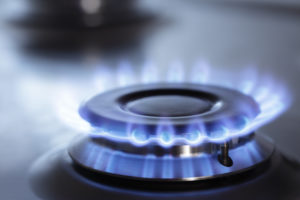 Natural gas surged on Thursday amid speculation for a larger than the 5-year average drop in US gas inventories ahead of EIA weekly report, due later today. Meanwhile, natural gas and heating demand is expected to remain very strong as a massive winter storm tracks across the US Northeast, leaving heavy snow and ice over many densely-populated US areas.
Natural gas surged on Thursday amid speculation for a larger than the 5-year average drop in US gas inventories ahead of EIA weekly report, due later today. Meanwhile, natural gas and heating demand is expected to remain very strong as a massive winter storm tracks across the US Northeast, leaving heavy snow and ice over many densely-populated US areas.
On the New York Mercantile Exchange (NYMEX), natural gas for delivery in March soared by 2.35% to trade at $4.936 per million British thermal units by 09:18 GMT. Prices hit a session high at $4.963 per mBtu, while day’s low was touched at $4.844 per mBtu.
Prices have soared 15% so far in 2014, after the energy source settled last year 26% higher, the best performance since 2005 and second straight annual advance.
CME Group Inc. announced last week, that effective from February 6th, the initial margin for next-month natural gas futures, traded on NYMEX, will increase almost 10% to $ 5 500 for speculators from $5 005. This will be the highest margin requirement in more than 4 years, and will be almost double the initial margin at the beginning of this year, which was $2 530.
According to Standard & Poor’s GSCI gauge of 24 commodities, gas futures are the most volatile commodity this year as volatility more than doubled from 31.64% last year to 80.2% in 2014.
US gas inventories levels
Stockpiles probably declined by 232 billion cubic feet in the week ended February 7, according to the median estimate of 10 analysts in a Bloomberg News survey. The five-year average drop is 162 billion. The Energy Information Administration is scheduled to release its weekly US gas storage today at 15:30 GMT.
“The market has burned up 88 percent of last summer’s total refill” of stockpiles, said Stephen Schork, the president of the Schork Group Inc., a consultant in Villanova, Pennsylvania, cited by Bloomberg. “The current pace of deliveries is running 1.45 times greater than the seasonal trend.”
EIA reported last Thursday that US natural gas inventories fell by 262 billion cubic feet in the seven days through January 31st, less than the median analyst’ forecast of a 273 billion cubic feet drop. However, the decline outstripped the five-year average drop of 151 bcf and last year’s 129-bcf decrease during the comparable week.
Total gas held in US underground storage hubs fell to 1.923 trillion cubic feet, 28.8% below last year’s amount of 2.701 trillion cubic feet during the comparable week. The deficit to the five-year average widened to a record 22.4%, up from 16.6% a week earlier.
Short-term weather outlook
NatGasWeather.com reported on February 13th that a major winter storm will track across the Mid-Atlantic and the US Northeast today, bringing heavy snow and ice, along with strong winds and whiteout conditions. The massive winter storm will leave heavy wet snow and ice accumulations on trees and power lines, which will cause disruptions in the power supply. Many densely-populated cities along the US East Coast will see more than a foot of heavy wet snowfall.
Another round of light to moderate snowfall can be expected over the Midwest and Northeast on Friday as a fresh dose of cold Canadian air moves into US territory. The latter will usher into another cold blast and will lower temperatures to below-normal, and according to the website will keep strong natural gas and heating demand.
According to AccuWeather.com, temperatures in Cleveland on February 14th may bottom at 13 degrees Fahrenheit, 13 beneath average, while readings in Detroit may plunge to 11 degrees Fahrenheit, below the average of 22. Temperatures in Chicago are expected to hit 3 degrees Fahrenheit, 18 below normal.
When cold weather is expected, natural gas surges as increased electricity demand to power air-conditioning calls for more supply of the fuel, which is used for a quarter of U.S. electricity generation. Above-average readings in the winter season have the opposite effect. Consumption usually picks up from November through March. According to the Energy Information Administration, power generation accounts for 32% of U.S. gas demand and 49% of U.S. households use the energy source for heating.
Extended forecast
NatGasWeather.com’s extended forecast for the period ended February 26th called for a big warm-up to take place as high pressure rapidly builds into the central and eastern US. According to the website, this will significantly reduce natural gas demand over the highest-consumption states of the north, as daytime highs may finally get into the 50s and even 60s. A reinforcing shot of cold weather may return over the Midwest after February 22nd and few days later into the Northeast with fresh snowfall.





